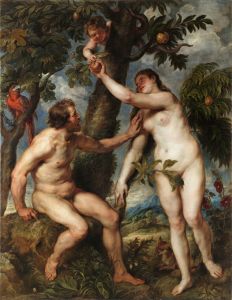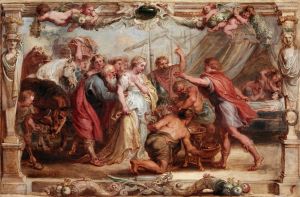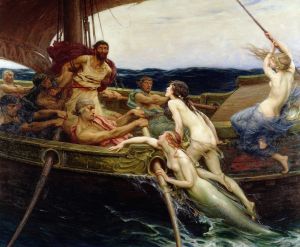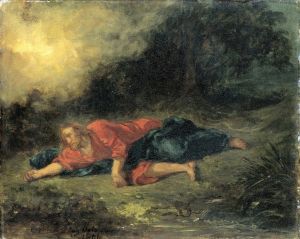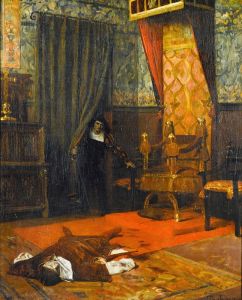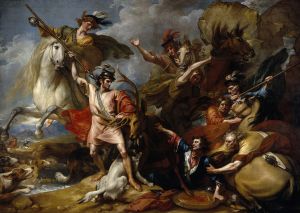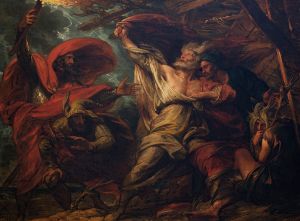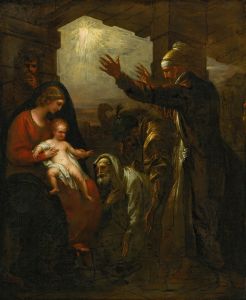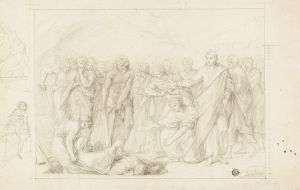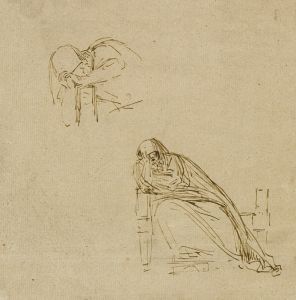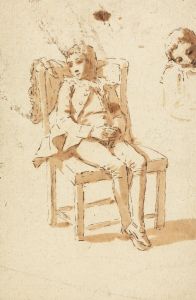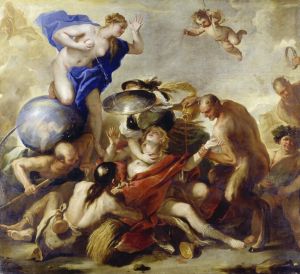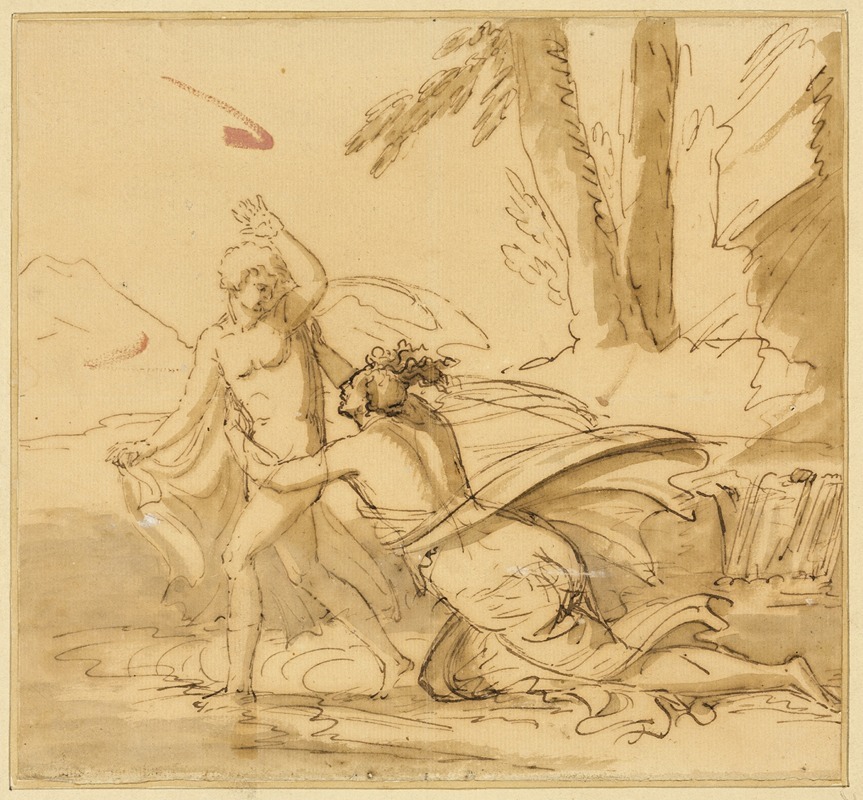
Joseph and Patiphar’s Wife
A hand-painted replica of Benjamin West’s masterpiece Joseph and Patiphar’s Wife, meticulously crafted by professional artists to capture the true essence of the original. Each piece is created with museum-quality canvas and rare mineral pigments, carefully painted by experienced artists with delicate brushstrokes and rich, layered colors to perfectly recreate the texture of the original artwork. Unlike machine-printed reproductions, this hand-painted version brings the painting to life, infused with the artist’s emotions and skill in every stroke. Whether for personal collection or home decoration, it instantly elevates the artistic atmosphere of any space.
"Joseph and Potiphar’s Wife" is a painting by the American artist Benjamin West, created in 1763. West, who was born in Pennsylvania in 1738, is often regarded as one of the most prominent painters of his time, particularly known for his historical and religious scenes. This painting is a notable example of his early work and reflects his interest in biblical themes.
The painting depicts a scene from the Old Testament story of Joseph, as recounted in the Book of Genesis, chapter 39. In this narrative, Joseph, who has been sold into slavery by his jealous brothers, rises to a position of trust in the household of Potiphar, an officer of Pharaoh. Potiphar’s wife, however, becomes infatuated with Joseph and attempts to seduce him. When Joseph resists her advances, she falsely accuses him of attempting to assault her, leading to his imprisonment.
West’s "Joseph and Potiphar’s Wife" captures the moment of Joseph’s resistance. The composition is dramatic, with Joseph depicted in a dynamic pose as he pulls away from Potiphar’s wife, who is grasping his cloak. The emotional intensity of the scene is heightened by the expressions and gestures of the figures, which convey the tension and conflict of the moment.
The painting is characterized by West’s use of rich colors and careful attention to detail, which were influenced by his studies in Italy and his exposure to the works of the Old Masters. The classical elements in the painting, such as the architectural background and the drapery of the figures’ clothing, reflect West’s academic training and his ability to blend contemporary and classical styles.
"Joseph and Potiphar’s Wife" is significant not only for its artistic qualities but also for its place in West’s career. It was created during his early years in London, where he had moved in 1763. This period was crucial for West, as he established himself in the European art scene and gained the patronage of influential figures, including King George III. The painting helped to solidify his reputation as a skilled painter of historical and religious subjects.
Today, "Joseph and Potiphar’s Wife" is held in the collection of the Detroit Institute of Arts. It remains an important work for understanding Benjamin West’s development as an artist and his contribution to the neoclassical movement in art. The painting continues to be studied and admired for its technical proficiency, emotional depth, and its ability to convey a powerful narrative through visual means.





